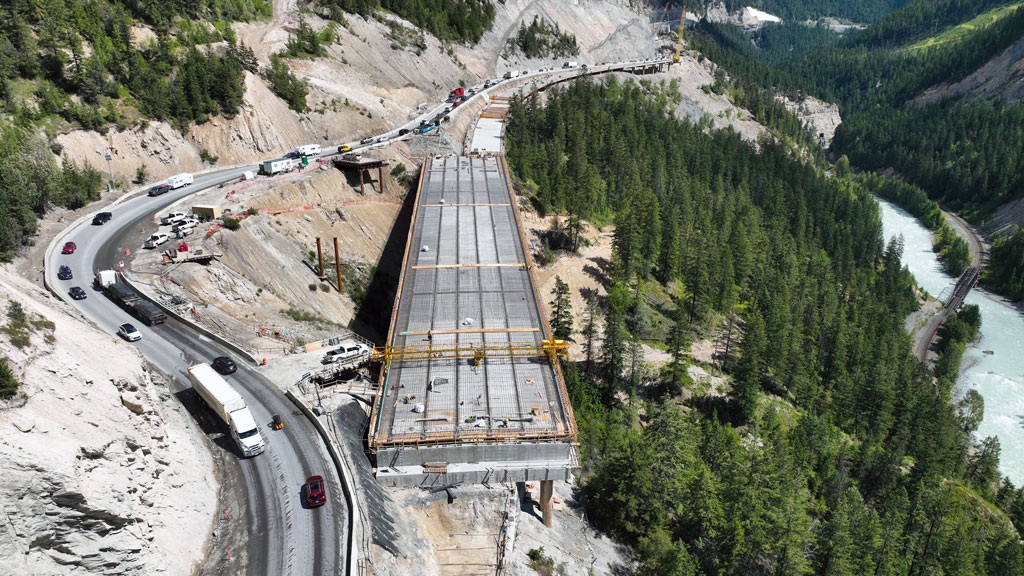There are some strong headwinds at play, but for the most part roadbuilders and aggregate producers in Central and Western Canada like what they see for 2023.
Despite a possible recession, interest rate hikes, supply chain issues and labour shortages, they remain upbeat about the year ahead.
In B.C., there is still a backlog of work from last year and anticipated government spending on transportation and infrastructure looks like it will remain steady this year, leading to more work for contractors.
In Manitoba, there is optimism as relations between the province and City of Winnipeg have improved, there is hope for private sector investments, and more money is anticipated for highways and roads.
Industry stakeholders in Alberta are expecting to see improvement in the work situation, although there is some uncertainty due to the upcoming provincial election, while in Saskatchewan heavy construction stakeholders hope to make more progress in the coming year.
Dani Miller, president of the BC Stone, Sand and Gravel Association, says a recession may be coming but there’s a lot of work still left from 2022 and there are still many megaprojects on the go across the province such as Site C, Coastal GasLink and the Trans Mountain Pipeline that are keeping the industry busy.
“Government spending on transportation and infrastructure is, relatively speaking, quite steady and it’s steady looking forward to 2025,” she says. “I don’t want to say that this is a recession-proof industry, but we have some things that cushion the blow for us.”
The Ministry of Mines has also rolled out policy changes that will clean up delays in mine permitting and continues to work on permitting efficiencies that will help deliver gravel faster, with less travel and less carbon to communities, Miller says.
The cost of fuel, shortage of labour and supply chain shortages are hampering the industry and making it difficult for contractors to bid on projects, says Kelly Scott, president of the BC Road Builders and Heavy Construction Association. However, he still expects a busy year of work as the industry is still catching up on work tendered in 2022 and there is additional road and highway repair work already planned for 2023.
“The emergency repairs were done in 2022 and now it’s more the permanent repairs, the permanent jobs that need to be done,” says Scott.
There were concerns the government was going to take funding earmarked for traditional infrastructure and use it for the emergency repairs, he says, but “that did not happen. The federal government came through.”
Chris Lorenc, president of the Manitoba Heavy Construction Association, expects the provincial highways capital program will be more robust in 2023 and Winnipeg’s local and regional streets program will also be stronger.
“We’re also more optimistic about private sector investments in this province which augers well for the vertical and horizontal construction industries,” he notes.
Improved relations between Winnipeg and the province also bode well for the industry, according to Lorenc.
Winnipeg Mayor Scott Gillingham and Premier Heather Stefanson have made a number of positive announcements that influence the direction of the province and the city, he says, so there’s an apparent and visible willingness to collaborate and look at ways to move forward.
“That is a mindset and relationship change that has been long, long overdue and we are very optimistic that it will continue with positive results.”
Rob Fragoso, executive director of the Alberta Sand and Gravel Association, is also optimistic the industry will see some improvement this year.
In November 2022, the value of new projects in the province increased to $13.7 billion – up from $12.1 billion at the same time in 2021. The biggest jump was in infrastructure projects, which climbed to $10.1 from $8.8 billion.
Fragoso says there are 16 projects valued between $100 million and $1 billion under construction in the commercial, infrastructure and residential sectors in the province, and 139 projects overall if those valued at $5 million or more are included.
“This isn’t a major spike, but the industry outlook for 2023 appears to show small growth,” he says.
The City of Edmonton also had a $68 million surplus, which may have some positive implications for the industry on expenditure plans, he notes.
However, Fragoso is worried there will be some disruption in political portfolios, which may have policy implications for the aggregates sector, no matter which party wins the provincial election in May.
In Saskatchewan, industry stakeholders are looking forward to making more progress in the upcoming year, Shantel Lipp, president of the Saskatchewan Heavy Construction Association (SHCA), says in a statement.
She says it’s important for the SHCA to help people better understand the industry and the challenges it faces.
“When we can help others recognize the significance of the work being done by our industry, we can not only benefit our members, but we can also improve what is possible in our province and country.”





Recent Comments